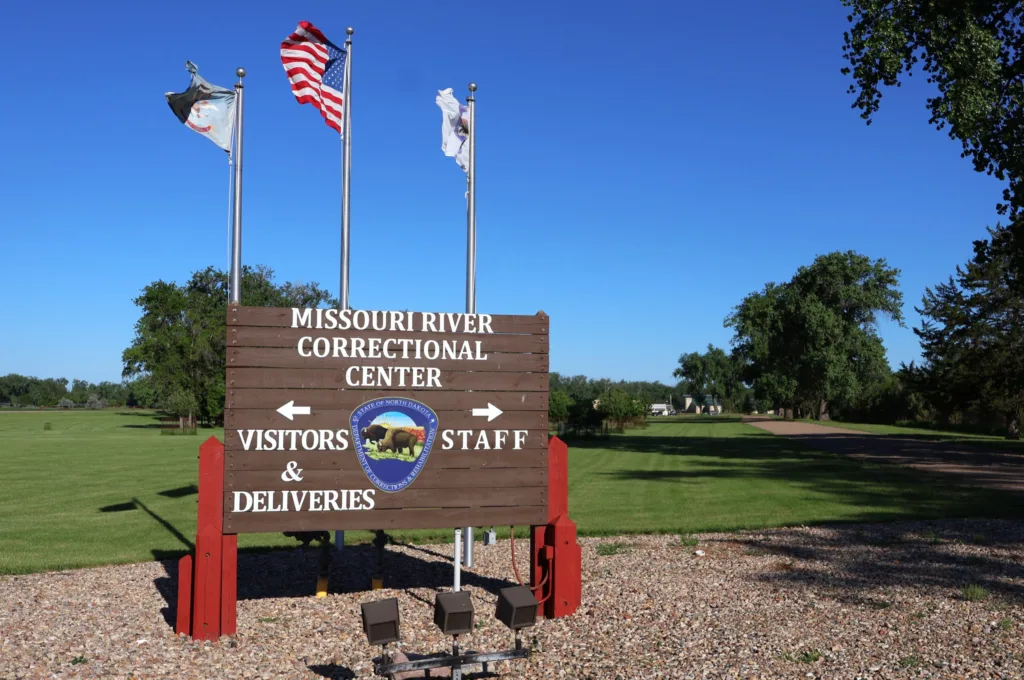

By: Mary Steurer (ND Monitor)
The North Dakota Department of Corrections and Rehabilitation is working to add as many as 300 additional beds to its overburdened prison system over the next year.
“We’re literally trying to lift up about, as far as I’m concerned, four mini prisons across the state all in the same year,” Department of Corrections and Rehabilitation Director Colby Braun told lawmakers at a committee meeting last month.
The state prison system has had a population more than 200 inmates over capacity on average during the past roughly two years. It was 193 male inmates over capacity on average between July 2023 and May 2025, according to data presented at the meeting. The system averaged 31 female inmates over capacity during that same time frame, the data show.
The state expected the corrections system to house up to 1,551 men and 229 women for 2023-2025. The average population as of the end of May for the two years was 1,744 men and 260 women.
The Legislature this year approved more than $37 million for the 2025-2027 budget cycle to provide immediate relief to prison overcrowding, including by building temporary shelters and contracting space from jails. The money will also go toward a new reentry facility in northwest North Dakota.
The agency got a little over $8 million to purchase man camps to provide overflow housing within the Missouri River Correctional Center. The department anticipates it to house 72 to 96 inmates, said Michele Zander, chief financial officer for the Department of Corrections and Rehabilitation. The $8 million would cover the housing units, an emergency generator, washers and dryers, technology costs and more.
While the agency is still in the process of procuring the buildings, it expects to have the facility open next summer or fall, according to Zander.
There would be an ongoing cost of about $1.3 million to cover staff and supplies for the temporary housing, officials said in a presentation to lawmakers earlier this year.
Another $27.4 million was set aside in the 2025-2027 budget to allow the agency to contract with county and regional jails for additional overflow housing.
This includes an agreement for the Department of Corrections and Rehabilitation to staff and operate a new section of the Grand Forks Jail, which could provide between 60 and 72 beds, according to Zander. She said this change could take effect sometime this fall.
The agency also hopes to enter into a similar agreement with the Burleigh Morton Detention Center. That jail has an unused housing unit that could give the agency another up to 120 beds.
The idea would be for the Department of Corrections and Rehabilitation to provide case management and behavioral health services, while the Burleigh Morton Detention Center would handle operations. Zander said the agreement is expected to take effect sometime early next year.
Contract negotiations are still in the works for those two projects, she said.
The department also received a $1.6 million appropriation to establish a 25-bed reentry center somewhere in northwest North Dakota — possibly Minot or Williston. Many incarcerated North Dakotans ultimately hope to return to the area after they wrap up their sentences, but they lack reentry options close to home, Zander said.
“This can cause extra hardship on residents that want to move back home,” she said in an email.
Other funding earmarked for the Department of Corrections and Rehabilitation this budget cycle will go toward building larger prison facilities. $35.6 million was set aside to finish construction of the Heart River Correctional Center, the state’s first prison designed for women. The facility, projected to cost about $166.8 million in total, will have 304 beds and is scheduled to open in fall of 2027.
The state also set aside $20 million to plan a new medium-security prison that’s expected to go next to the State Penitentiary.
The agency last month also provided lawmakers with an estimate for its cost overruns from the 2023-2025 budget cycle, which ended June 30. The 2025 Legislature approved the agency’s request for a deficiency appropriation to cover these costs.
The amount as of late June was expected to be about $11 million. The expenses largely stem from prison overcrowding, according to the agency.
The bulk of the deficiency — a little over $8 million — came from county and regional jails that the Department of Corrections and Rehabilitation previously contracted with to house inmates that state facilities don’t have room for.
This story has been updated to add the total estimated population of the prison system.